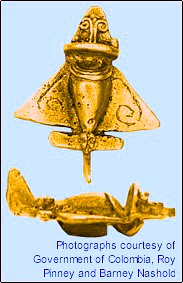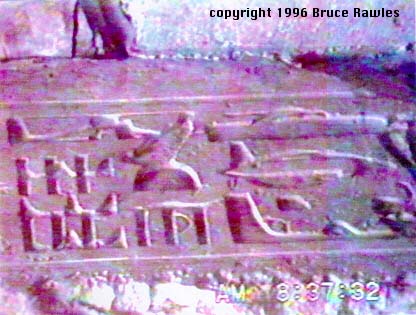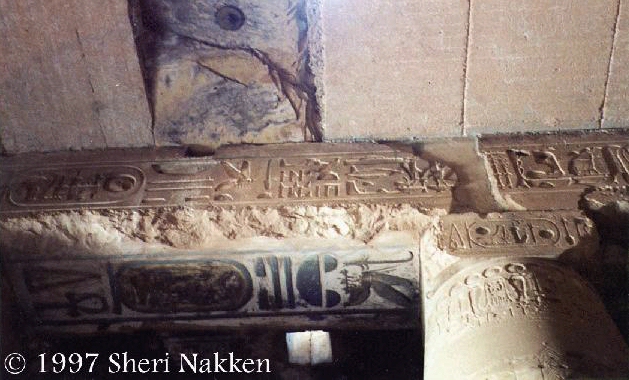|
 |
Edgar Cayce and many others place Atlantis in a
region which would include what we now call the Bermuda Triangle. In the 1930's
Cayce's readings told of evidence of Atlantis to be found off the coast of Bimini, in the
records of Egypt, and in the stones of the Yucatan (Central America). Cayce speaks
extensively of the use of crystals and their energies by the Atlanteans. |
 |
The Spanish conquerors of Central and South America
learned through records and stories of the Mayans, Incans, and Aztecs of Atlan,
the wise kingdom which once existed to the east of the Americas, and met its demise by
cataclysm. These peoples also maintained records and traditions regarding the
continent of Mu in the Pacific, which had met its demise
before Atlan. |
 |
There have been numerous old maps discovered which
record Atlantis in the same region Cayce describes. Three of the most famous of
these maps are: the Piri Re'is map which not only shows the coastlines of Atlantis, but
the shores of Antarctica without its ice. An ancient map held by King Henry in the
1500's. And, the 1482 Benincasa Map, showing the 3 large islands which composed
Atlantis, used by Christopher Columbus to navigate his way to America. |
 |
In the 1930's workers clearing the Diquis Delta of
Costa Rica Central America, exposed a forest floor littered with hundreds and hundreds of
artificially-smoothed stone spheres. The largest of these spheres is 8-feet in
diameter. |
 |
In 1957 Dr. David Zink, diving off the coast of the
Bahamas, discovered and photographed a stylized marble head block which had a seam,
as if it had been produced from a mold, a second block that appeared to have been tooled
by a drill, and a column of the same stone. |
 |
In 1958 Dr. William Bell discovered and photographed
a six-foot erect spire protruding from a mechanical-looking base which included two large
circular gears and other parts which were obscured by the sand of the ocean floor.
Oddly, light emanated from the mechanical base causing the water to have a dull glow at
the bottom of the spire. This peculiar light is clearly visible in the photographs
he captured. |
 |
In 1969, during the Dr. Manson Valentine expedition,
which was both photographed and video taped, stone stairs were discovered on Bimini
leading down into the ocean, where a path paved in large stones and wall remnants
were found beneath the waters. These ruins are of striking comparison to ruins of an
unknown civilization found in Tiahuanaco, Bolivia, which is connected to Atlantis by way
of its mythology. Discoveries are still being made to this day around the island of
Bimini. |
 |
In the 1970s a Soviet expedition to the Atlantic's
Ampere Seamount discovered and photographed a large number of ruins there, all of which
had been destroyed by lava. The pictures were published in the New York Times on May
21, 1978. The pictures had been developed and released to the press by the Soviet
Academy of Science's Institute of Oceanography. The Academy reported similar
findings near Cadiz, Spain close to the ruins later discovered by the Asher expedition. |
 |
In 1973 a team of some 70 scientists, teachers,
archeologists, and divers, under endorsement from Pepperdine Universtiy, traveled the
Atlantic in search of Atlantis. That same year Maxine Asher, co-director for the
expedition, released a statement to United Press International which was featured in every
major newspaper at the time. Asher stated that Atlantis had been discovered "in
the exact place discribed by the Greek philosopher, Plato". She discribed what
they found as being a "super-civilization", and furthered that the expedition
had documented roads, large columns (many bearing spiral motifs), walls, and canals which
littered the sea floor for a great distance. Among other items, an oddly inscribed
urn that had been brought to the surface by the expedition was displayed for American
photographers. |
 |
In 1977, during the Ari Marshall expedition, a huge
pyramid was photographed off the coast of Cay Sal, in the Bahamas. The pyramid rests
at a depth of 800 feet, with the capstone being 150 feet below the surface. Despite
the dark appearance of the ocean in the region, the water immediately surrounding the
pyramid ranged from an eerie white to a very clear green color. |
 |
In 1979 an "In Search of Atlantis"
television show with Leonard Nemoy featured the story of a crystal sphere discovered
underwater by Dr. Ray Brown on a scuba diving trip near the Bahama's Bari Islands in 1970.
The interior of the quartz sphere, in normal view, depicts three smooth-sided pyramids
on top of one another. From another angle, many claim to see a fourth, more illusive,
pyramid. Still, from another angle, there is the interior image of an open
eye. This later image, as well as the three pyramids, have been clearly captured on
film. The sphere was first publicly displayed in 1975 in Phoenix, Arizona where a
host of strange phenomenon was recorded in the sphere's presence, mostly magnetic
disturbances which included compasses spinning counter-clockwise when placed in close
proximity to the sphere. |
|
|


